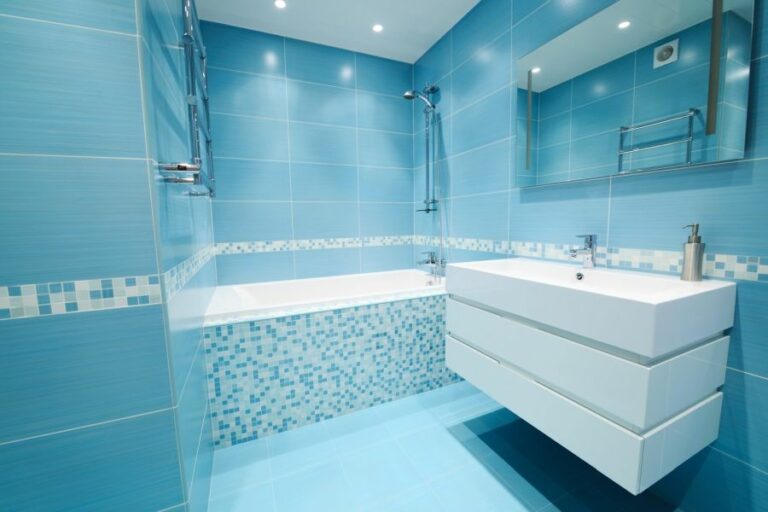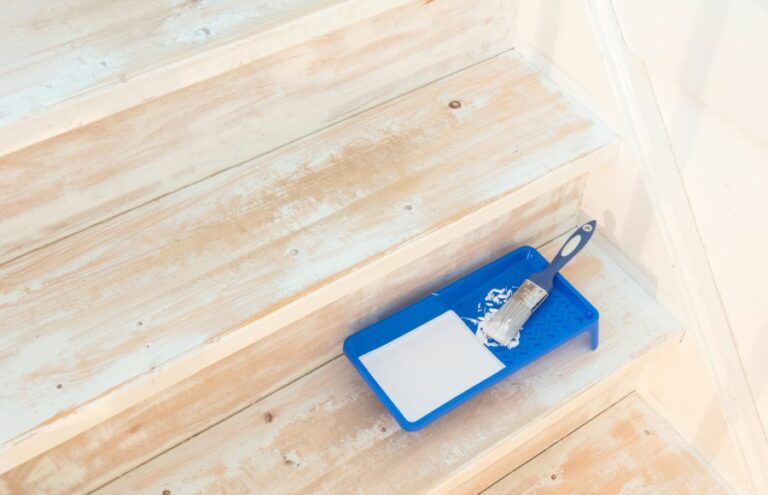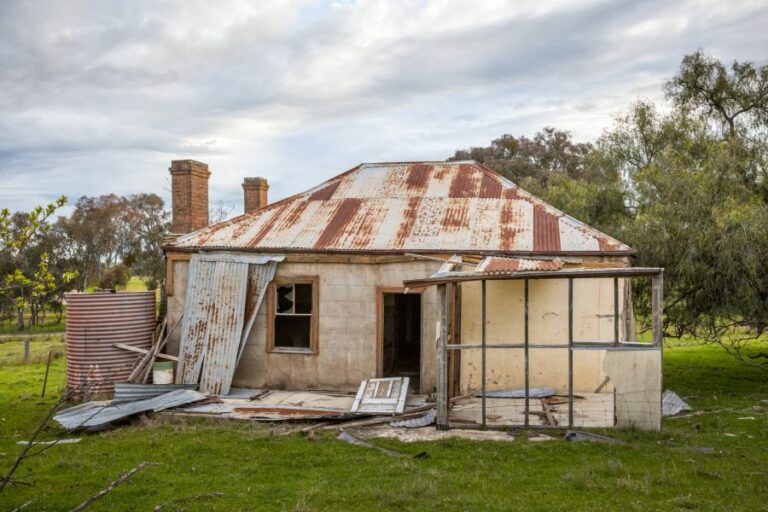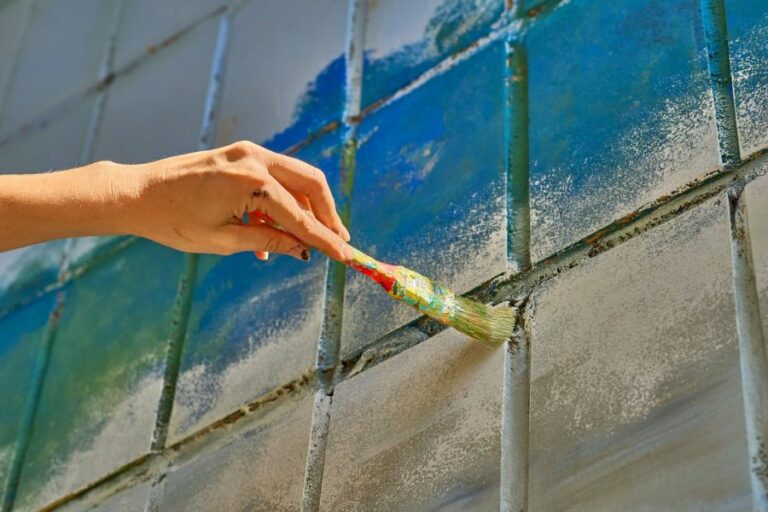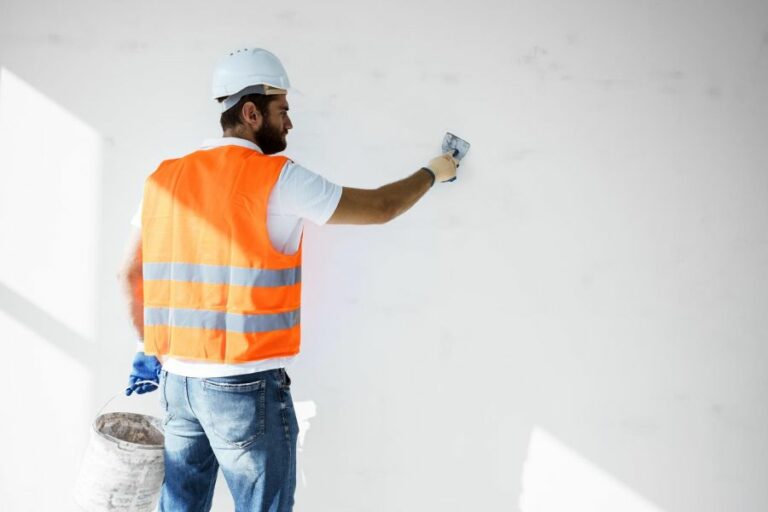Protective PWRP Coating For Wood Surfaces. What Pros Say
Are you tired of your wooden surfaces becoming easily damaged, scratched, or discolored? You might be surprised to learn that a single solution can help prevent these common issues while adding durability and longevity to your wood. It’s called Protective PWRP coating, and it just might revolutionize the way you think about maintaining and preserving your valuable wooden surfaces.
Protective PWRP coating for wood surfaces:
PWRP (Protective Wood Rain Protection) coating is a specialized treatment for wooden surfaces, offering enhanced resistance to water damage and UV radiation exposure. It ensures long-lasting protection, easy maintenance, and eco-friendliness, making it an effective solution for preserving and extending the life of wooden structures.

Discover the wonders of PWRP coating, a revolutionary solution designed to protect and preserve your wood surfaces for years to come.
From sealing and waterproofing to enhanced durability, learn how this innovative technology can transform the way you treat and maintain wooden structures. Read on to unlock the secrets of this remarkable coating.
Contents
- 1 PWRP Coating: Ultimate Protection for Wooden Surfaces
- 2 Top-Rated Wood Protection Coatings: A Comprehensive Guide
- 3 Understanding Protective Wood Coating Solutions
- 4 Discover the Finest Protection Methods for Untreated Wood
- 5 Superior UV-Resistant Clear Coats to Guard Your Wood
PWRP Coating: Ultimate Protection for Wooden Surfaces
• What is PWRP Coating?
Protective Wood Rain Protection (PWRP) coating refers to a specialized treatment that provides enhanced resistance against water damage and ensures long-lasting protection for wooden surfaces.
This innovative coating technology has gained significant popularity in recent years for its eco-friendly nature and superior protection capabilities.
• Benefits of PWRP Coating for Wood Surfaces
– Enhanced Durability
A primary advantage of PWRP coating is the enhanced durability it provides to wood surfaces. This superior layer of protection guards the wood from the detrimental effects of moisture, preventing rot, mold, and warping.
– UV Protection
PWRP-coated surfaces exhibit improved resistance to the damaging impacts of ultraviolet (UV) radiation exposure. This feature is particularly beneficial for exterior wooden surfaces that are exposed to the sun regularly.
– Easy Maintenance
PWRP coating makes the maintenance of wood surfaces simple and hassle-free. The protective layer keeps the wood clean and enables easy removal of dirt and grime with a simple wipe down.
– Environmentally Friendly
Eco-friendliness is another vital aspect of PWRP coating technology. The use of water-based formulas in these coatings reduces the emission of volatile organic compounds (VOCs), making them a more environmentally responsible choice.
• Application Process
– Surface Preparation
Before applying the PWRP coating, it is crucial to prepare the wood surface adequately. Start by removing any dirt, grime, or loose paint.
Additionally, ensure the wood is dry and free of any moisture content. Sanding the surface lightly will help create a smooth, even foundation for the coating application.
– Coating Application
Next, apply the PWRP coating evenly over the prepared wood surface using a brush or roller. Depending on the product specifications, it could be necessary to apply multiple coats. Allow each coat to dry thoroughly before adding the next layer.
– Drying and Curing
Once the final coat has been applied, allow ample time for the coating to dry and cure completely. The duration for this process might vary based on factors such as temperature, humidity, and the specific PWRP coating used.
• Choosing the Right PWRP Coating
Numerous brands and formulations of PWRP coatings are available in the market. To choose the most suitable product for your needs, consider the following factors:
– Quality and Performance
Invest in a high-quality PWRP coating that offers superior protection, durability, and water resistance.
– Application Method
Choose a PWRP coating that is compatible with your preferred application method, whether it’s brushing, rolling, or spraying.
– Drying Time
Opt for a PWRP coating that dries and cures within a time frame that is suitable for your project timeline.
– Eco-friendliness
Select an environmentally friendly PWRP coating with low VOC content to minimize negative impacts on the environment.
• Expert Recommendations
- As a protective coating professional, I recommend selecting a high-quality PWRP coating from a reputable brand to ensure the best results and long-lasting protection of your wood surfaces.
- Pay close attention to the product-specific application instructions to achieve an even, consistent coat and prevent potential issues such as peeling or bubbling.
- Perform routine cleaning and maintenance of the PWRP-coated surfaces to extend their lifespan and maintain their appearance.
• Conclusion
Protective PWRP coating for wood surfaces is an innovative, eco-friendly solution that offers exceptional protection against moisture, UV radiation, and damage.
Ensure you adequately prepare your wood surfaces, apply the coating per product instructions, and select the best PWRP coating to suit your needs. This approach will considerably enhance the longevity and attractiveness of your wooden structures, providing peace of mind and long-lasting satisfaction.
Top-Rated Wood Protection Coatings: A Comprehensive Guide
• Introduction to Wood Protective Coatings
Wood is a versatile and beautiful material used in various applications like furniture, decking, and siding. To ensure the longevity of wood, it is crucial to protect it from external factors like moisture, UV rays, and insects.
A proper wood protective coating is the key to maintaining the durability of the wood and keeping it in good condition for years to come.
• Oil-Based Wood Coatings
– Linseed Oil
Linseed oil is a natural and traditional wood protective coating obtained from the seeds of the flax plant. Linseed oil penetrates deep into the wood, providing protection from within. Linseed oil also nourishes the wood and enhances its natural beauty.
However, linseed oil can take longer to dry and might not offer the best protection against UV rays.
I recommend: Boiled linseed oil is better than raw linseed oil, as it dries faster and provides slightly better protection.
– Tung Oil
Tung oil, obtained from the seeds of the tung tree, is another natural option for wood protection. Tung oil penetrates the wood, providing excellent water resistance and creating a durable finish. This oil also has anti-fungal properties, making it suitable for outdoor applications.
I recommend: Using pure tung oil instead of tung oil finishes, as the latter may contain additives and metallic driers, which can be harmful if ingested.
• Varnishes
Varnishes are an excellent choice for wood protection because they provide a hard and long-lasting finish that protects the wood from moisture and scratches.
– Alkyd Varnish
Alkyd varnish is a popular choice for wood protection due to its flexibility and ability to expand and contract with temperature changes. Alkyd varnishes come in various sheens, allowing you to choose the finish that suits your project best.
I recommend: Use alkyd varnishes for exterior applications, such as decking, because they provide excellent UV resistance and maintain their finish better than other varnishes.
– Polyurethane Varnish
Polyurethane varnishes are another great option for wood protection, offering superior durability and resistance to moisture, scratches, and wear. Polyurethane comes in both oil-based and water-based formulations, with oil-based polyurethane providing a slightly more durable finish.
I recommend: Use polyurethane varnishes for high-traffic interior projects like floors and furniture, as they provide maximum protection and durability.
• Wood Stains and Sealers
– Wood Stain
Wood stains provide color and a layer of protection to wood surfaces, enhancing the natural beauty of the wood grain while protecting against moisture and UV damage. Wood stains come in various opacity levels, allowing you to choose the level of color and grain visibility you desire.
I recommend: Use a wood stain with UV inhibitors for exterior applications, such as siding or decking, to prevent the wood from graying due to sun exposure.
– Wood Sealer
A wood sealer is a clear or lightly tinted protective coating that seals the wood surface, preventing moisture from penetrating the wood fibers. Wood sealers often contain UV inhibitors and mildewcides, making them ideal for outdoor wood surfaces.
I recommend: Apply a wood sealer after staining for an added layer of protection, especially on exterior wood surfaces.
• Paints
In some situations, using paint can be the best option for wood protection. Paint provides an opaque finish that completely covers the wood, offering maximum protection from moisture, UV rays, and insects.
I recommend: Use high-quality acrylic latex paint for exterior wood surfaces and oil-based enamel paint for interior wood trim and cabinetry.
• Epoxy Resins
Epoxy resins are an excellent option for wood protection in harsh environments or situations where the wood surface will be exposed to water frequently. Epoxy resins create a thick, impenetrable barrier that encases the wood and provides unparalleled protection from moisture, chemicals, and abrasion.
I recommend: Use epoxy resins for wood items like countertops, bar tops, and boat repairs, where maximum protection and durability are required.
• Conclusion
In conclusion, choosing the best wood protective coating depends on your project’s specific needs and requirements.
Consider factors like exposure to the elements, desired finish, and durability when selecting the right wood protection. By using the appropriate wood coating, you can ensure the longevity and beauty of your wood surfaces for years to come.
No. | Protective Coating | Key Features |
|---|---|---|
1 | Water-Based Polyurethane | Easy clean-up, low odor, non-yellowing, quick drying time, durable |
2 | Oil-Based Polyurethane | Highly durable, resistant to wear and chemicals, warm amber glow, self-leveling |
3 | Shellac | Fast drying time, easy to apply, non-toxic, high gloss finish, natural product |
4 | Varnish | Very durable, resistant to moisture, UV protection, high gloss finish |
5 | Lacquer | Superior glossy finish, fast drying time, easy to apply |
6 | Penetrating Oil | Maintains the natural look and feel of the wood, is easy to apply and maintain, and is very durable |
7 | Wax | Good wear and moisture resistance, easy to apply, gives a nice satin sheen |
Understanding Protective Wood Coating Solutions
Wood is a naturally beautiful and versatile material that is used for various applications such as furniture, construction, and artwork.
However, wood is also prone to damage from moisture, insects, and UV exposure. This is where protective wood coatings come into play. A protective coating for wood helps maintain its aesthetics and durability, ensuring it lasts for a long time.
• Types of Protective Wood Coatings
Protective coatings for wood can be classified into two main categories – film-forming finishes and penetrating finishes.
– Film-forming Finishes
These finishes form a protective barrier over the wood surface, preventing direct contact with external elements. Examples of film-forming finishes are:
Varnish
Varnish is a combination of resins, solvents, and drying oils. It forms a transparent and glossy finish on the wood surface, enhancing the natural grain and color. Varnishes are durable, water-resistant, and ideal for outdoor furniture or wooden structures.
Polyurethane
Polyurethane finishes are available in water or oil-based formulations and come in various sheens. They offer excellent protection against wear, moisture, and chemicals. These coatings are ideal for high-traffic areas, such as floors, tabletops, and cabinets.
Lacquer
Lacquer is a fast-drying finish that provides a smooth, glossy appearance. It is typically applied using a spray gun, which allows for easy and quick application. Lacquers are ideal for furniture and other indoor wooden surfaces.
However, they tend to provide less protection against UV radiation and moisture compared to varnish or polyurethane finishes.
– Penetrating Finishes
These finishes are absorbed into the wood fibers, providing protection from within. Examples of penetrating finishes are:
Oil-based Finishes
Oil-based finishes like linseed oil and tung oil penetrate deep into wood fibers and harden, providing water resistance and a natural sheen. They are easy to apply and maintain, making them popular choices for DIY projects and antique restoration.
Wood Stains
Stains are used to alter the color of the wood while allowing the grain to show through. Stains can be oil, water, or gel-based and are available in various colors. They are generally applied before a topcoat of varnish or polyurethane for added protection.
• Factors to Consider When Choosing a Protective Wood Coating
To ensure the right choice of protective wood coating for your project, consider the following factors:
– Indoor or Outdoor Application
Different coatings offer varying degrees of protection against external elements like moisture, UV radiation, and temperature fluctuations.
For outdoor projects, a varnish or high-quality polyurethane coating provides better protection, while for indoor applications, lacquer or oil-based finishes may be ideal options.
– Desired Appearance
Protective wood coatings often influence the final appearance of the wooden surface. If you prefer a natural, matte look, consider using an oil-based finish or stain. On the other hand, if you desire a glossy, smooth appearance, opt for varnishes or lacquers.
– Durability and Maintenance
Some finishes require more maintenance than others. Oil-based finishes need regular reapplication to maintain their protective properties while film-forming finishes like polyurethane and varnish require less frequent maintenance.
– Ease of Application
If you are a DIY enthusiast or have limited experience with wood finishing, stick to coatings that are easy to apply, such as oil-based finishes or wood stains.
• Tips for Successful Application of Protective Wood Coatings
- Wood surface preparation is essential to sand the surface uniformly and clean any dust and debris.
- Follow the manufacturer’s instructions regarding application techniques, drying times, and required safety measures.
- Apply the coating in a well-ventilated area and use proper protective gear if necessary.
- Multiple thin layers provide better protection and appearance than a single thick layer, allowing each coat to dry before applying the subsequent coat.
- Regularly inspect and maintain the wood coating to ensure its longevity.
• Conclusion
Protective wood coatings play a vital role in enhancing the appearance and extending the lifespan of your wooden projects. Understanding the types of coatings available, factors to consider, and the proper application technique is essential to achieve the desired results.
As an experienced woodworker, I always recommend investing time and effort in selecting the appropriate wood coating, as it significantly impacts the final outcome of your project.
Discover the Finest Protection Methods for Untreated Wood
As a professional with experience in woodworking and wood finishing, I understand the importance of protecting raw wood from damage, whether it’s from the elements, insects, or everyday wear and tear.
• The Importance of Sealing Raw Wood
Raw wood is susceptible to damage from a variety of sources. Moisture can cause rotting, warping, and swelling, while sunlight can lead to discoloration and weakening of the wood structure. Insects, such as termites, can also wreak havoc on untreated wood.
To keep your wood materials in top condition, it’s important to choose the appropriate protective treatment.
• Types of Wood Protection
There’s no single “best” way to protect raw wood, as the ideal method depends on factors like the type of wood, its intended use, and the climate in which it will be installed. Here are some of the most common methods for protecting raw wood:
– Oil-Based Wood Sealants
An oil-based sealant penetrates the wood fibers and provides protection against water and insect damage. Types of oil-based sealants include linseed oil, tung oil, and Danish oil.
Oil-based sealants are often favored for their natural appearance and ease of application, but they can require more frequent maintenance compared to other treatment options.
– Varnish
Varnishes provide a durable, transparent finish that protects wood from moisture, sunlight, and scratches. There are three primary types of varnish: alkyd, phenolic, and polyurethane.
Each type has its own set of benefits and drawbacks, but all are designed to offer a high level of protection for your wood.
– Paint
Paint offers excellent protection against moisture, sunlight, and insects. It is a common choice for exterior wood surfaces due to its ability to seal out the elements.
However, it’s important to note that paint can obscure the natural beauty of the wood grain, so those seeking a more natural aesthetic may want to consider other options.
– Stain and Sealant Combinations
Stain and sealant combinations are a popular choice for those who want the best of both worlds: the protective qualities of a sealant along with the color and tone enhancement of a stain. These products come in a variety of colors and finishes and must be applied more frequently than varnishes or paints.
• Selecting the Right Wood Protection for Your Project
To choose the ideal treatment for your raw wood, you’ll need to consider factors such as exposure to moisture, sun, and insects, as well as the aesthetics you desire for the finished project. Here are some recommendations based on my experience.
– Outdoor Furniture and Structures
For outdoor furniture and structures, such as decking or fencing, I recommend using a stain and sealant combination or a high-quality exterior paint to protect against moisture, sunlight, and insect damage.
– Indoor Furniture and Cabinetry
For indoor furniture and cabinetry made from raw wood, I recommend using a varnish or oil-based sealant, depending on your desired appearance. Varnishes offer increased durability and scratch resistance, while oil-based sealants provide a more natural, matte finish.
– Decorative Wooden Items
For decorative items made from raw wood that won’t experience heavy wear or exposure to moisture, an oil-based sealant can be an ideal choice.
This type of protection enhances the natural grain of the wood without a glossy finish, giving the piece an organic, rustic appearance.
– Architectural Woodwork and Molding
For architectural woodwork and molding, a high-quality paint or varnish is recommended to provide protection and a polished appearance. Both options offer a durable finish that can withstand normal wear and tear while enhancing the beauty of the wood.
• Maintaining Your Protected Wood
No matter which treatment method you choose, it’s important to maintain your wood properly to ensure it lasts as long as possible.
This may involve periodic reapplication of sealants, stains, or paint, as well as general cleaning and care. Always follow the manufacturer’s instructions for your specific product to achieve the best results.
In conclusion, the best protection for raw wood depends on your specific needs and preferences. Take the time to consider factors such as durability, maintenance requirements, and desired aesthetics when selecting the right finish for your project.
With proper care, your treated wood will remain beautiful and functional for many years to come.
Protection Method | Description | Benefits |
|---|---|---|
Sealant | A wood sealant is a clear protective finish that forms a barrier against water and moisture. | |
Stain | A wood stain penetrates the wood fibers to change the color and provide some protection from the elements. | |
Paint | Paint is a thick, opaque coating that covers the wood surface and provides strong protection against the elements. | |
Oil finish | An oil finish, such as tung or linseed oil, penetrates the wood and hardens to form a protective barrier. |
Superior UV-Resistant Clear Coats to Guard Your Wood
If you’re looking to protect your wooden surfaces from the harsh effects of UV rays, a top-quality, UV-resistant clear coat is crucial.
• The Importance of UV Protection for Wood
UV radiation from the sun can be hugely detrimental to wooden surfaces, causing them to fade, crack, and become discolored over time. A high-quality UV-resistant clear coat not only preserves the natural beauty of the wood but also prolongs its lifespan.
– Key Features of a UV-Resistant Clear Coat
When searching for the best UV-resistant clear coat for wood, consider the following factors:
- UV absorbers and inhibitors: A top-quality clear coat contains UV absorbers and inhibitors, which nullify the impact of UV rays by absorbing and dissipating the energy.
- Durability: The clear coat must be long-lasting and robust enough to withstand harsh weather conditions.
- Ease of application: The product should be user-friendly and compatible with a range of application methods like brushing, spraying, or rolling.
- Drying time: A fast-drying formula ensures a quick project turnaround.
- Finish: The clear coat should provide an even, attractive, and non-yellowing finish.
In the following sections, we’ll discuss the top UV-resistant clear coats for wood and their individual merits.
• Best UV Resistant Clear Coats for Wood: Recommendations
1. General Finishes Exterior 450 Clear
General Finishes Exterior 450 Clear receives high marks for its excellent UV protection capabilities and durability. Comprised of advanced UV absorbers and inhibitors, it works to prevent sun damage, making it an excellent choice for outdoor wooden surfaces.
- Pros: Easy to apply, fast drying, and attractive finish.
- Cons: May require multiple coats for optimal protection.
2. Minwax Helmsman Spar Urethane
A popular choice among DIY enthusiasts, Minwax Helmsman Spar Urethane offers exceptional UV resistance.
It boasts specialized UV blockers that protect the wood from exposure to sunlight, while its formulation ensures that the finish remains flexible and expands or contracts according to temperature changes.
- Pros: Durable, long-lasting protection, and minimizes peeling and chipping.
- Cons: Longer drying time and noticeable odor during application.
3. TotalBoat Gleam Marine Spar Varnish
TotalBoat Gleam Marine Spar Varnish is designed explicitly for marine environments and withstands harsh weather conditions. In addition to its remarkable UV protection, it is resistant to saltwater and humidity.
- Pros: Marine-grade quality, impressive flexibility, and high-gloss finish.
- Cons: Thicker consistency, which may require thinning before application.
4. Ready Seal Exterior Wood Stain and Sealer
The Ready Seal Exterior Wood Stain and Sealer is perfect if you prefer a stained finish instead of a transparent one. This product provides excellent UV protection along with water resistance, making it a suitable choice for outdoor wooden surfaces.
- Pros: Easy maintenance, available in a variety of colors, and exceptional UV protection.
- Cons: Requires more frequent reapplication compared to clear coat options.
5. Rust-Oleum Varathane Water-Based Spar Urethane
With its advanced UV blockers and inhibitors, Rust-Oleum Varathane Water-Based Spar Urethane is another excellent choice for protecting wooden surfaces from the sun. It is water-based, making for easy cleanup and reducing odor during application.
- Pros: Low odor, easy application, and excellent UV resistance.
- Cons: Multiple coats may be necessary for optimal results.
• Maintenance Tips for UV Resistant Clear Coats
To ensure the longevity of your UV-resistant clear coat, follow these maintenance tips:
- Regularly clean and dust the wooden surface to prevent the accumulation of dirt and grime.
- Periodically inspect the surface for signs of wear or damage and address them promptly.
- Reapply the UV-resistant clear coat according to the manufacturer’s recommendations.
In summary, the best UV-resistant clear coat for wood is one that offers exceptional UV protection, durability, and ease of application.
We recommend considering options like the General Finishes Exterior 450 Clear, Minwax Helmsman Spar Urethane, or TotalBoat Gleam Marine Spar Varnish, as these products have consistently proven to be top performers in the field.
Product Name | Manufacturer | Key Features |
|---|---|---|
Spar Urethane | Minwax | UV resistant, water-resistant, available in various sheens |
Marine Grade Epoxy | West System | UV resistant, water-resistant, high-build, durable |
Waterlox Original Sealer/Finish | Waterlox | UV-resistant, water-resistant, tung oil based |
UV Plus Finish | Messmer’s | UV resistant, water-resistant, designed for exterior wood |
Sikkens Cetol SRD RE | Sikkens | UV resistant, water resistant, protects against mold and mildew |

